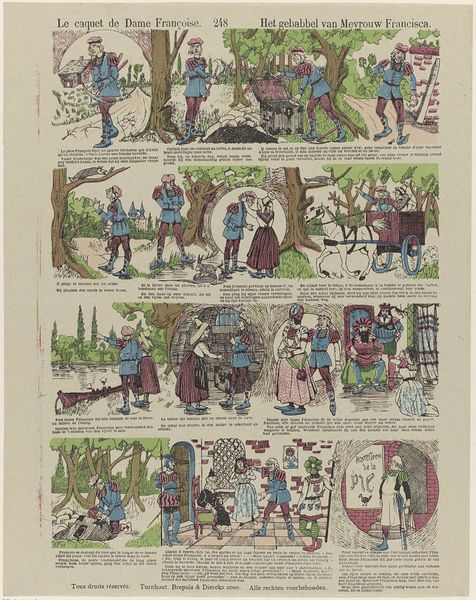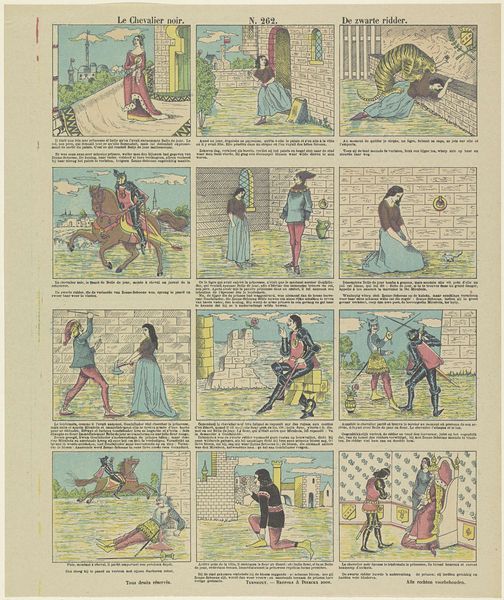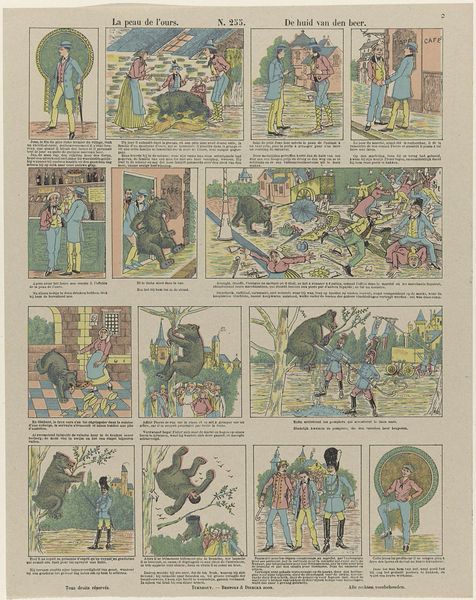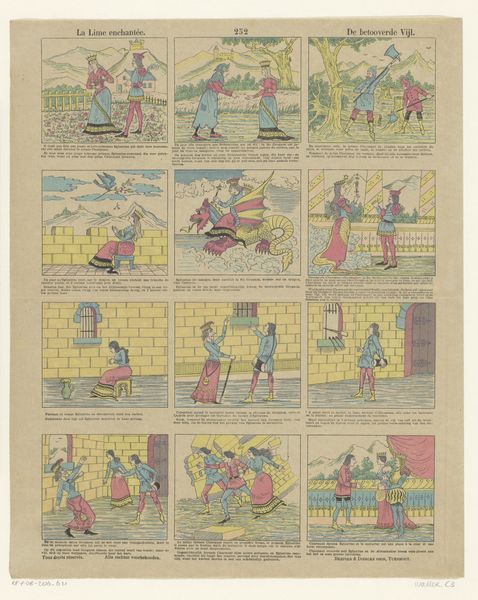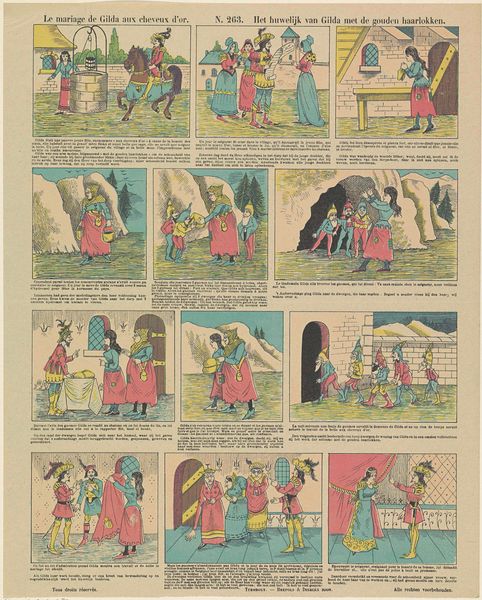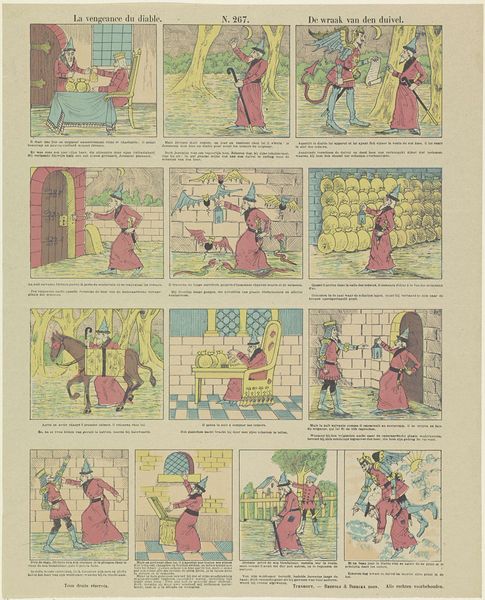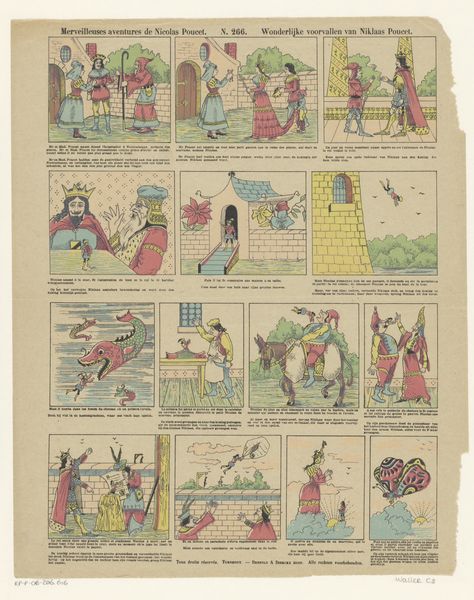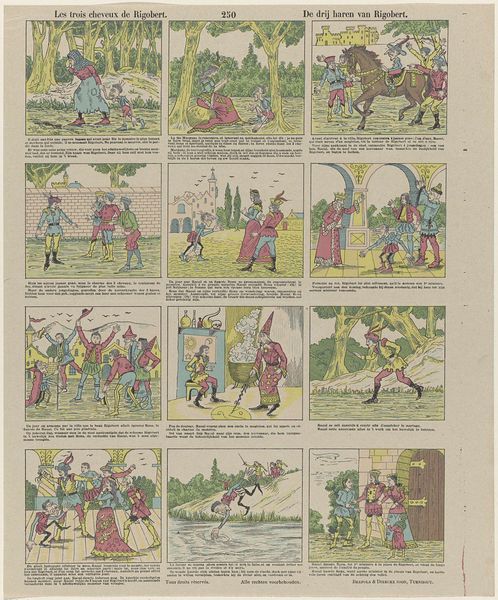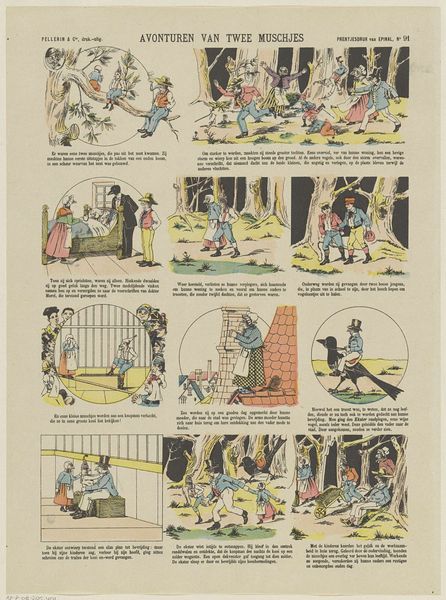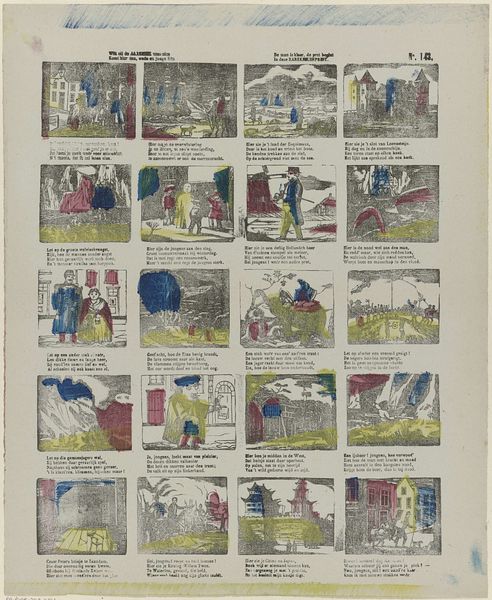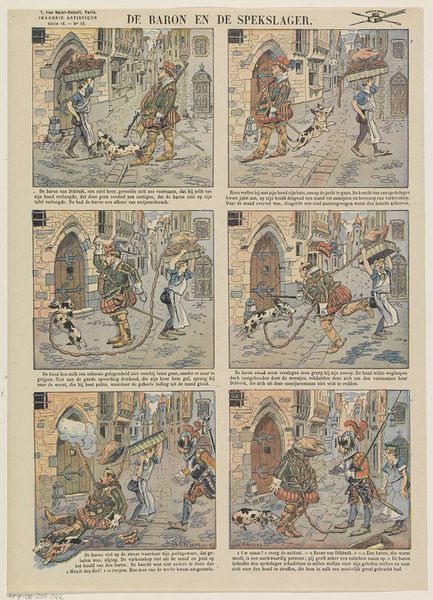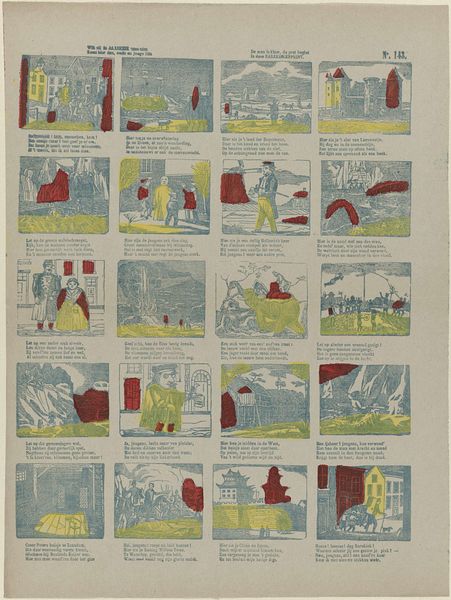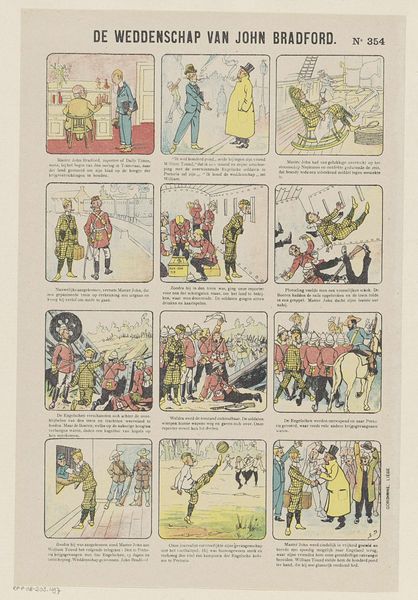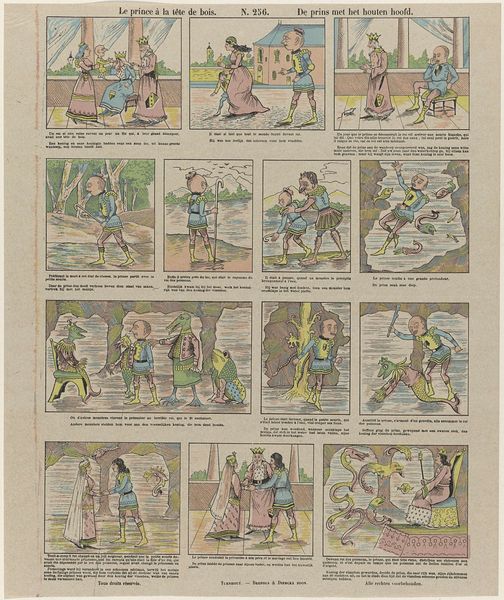
graphic-art, print
#
graphic-art
#
comic strip sketch
#
narrative-art
#
comic strip
# print
#
personal sketchbook
#
sketchwork
#
thumbnail sketching
#
comic
#
pen work
#
sketchbook drawing
#
storyboard and sketchbook work
#
sketchbook art
#
story boarding
Dimensions: height 375 mm, width 318 mm
Copyright: Rijks Museum: Open Domain
Editor: This is "Le Pantin merveilleux," or "The Wonderful Puppet," a comic strip dating between 1833 and 1911 by Brepols & Dierckx Zoon. The limited color palette gives it a unique storybook feel. How would you interpret this work, considering the period it was created in? Curator: Given the social context of the late 19th and early 20th centuries, these comic strips played a crucial role in shaping public imagination and conveying societal values. Comic strips like "Le Pantin merveilleux" not only entertained but also subtly educated, acting as visual narratives that were accessible across different social classes. It is curious how it uses common folktales from the oral traditions, and adapts these traditional narrative structures into new modes of visual production and social messaging. Editor: That’s interesting. Were there specific regulations that controlled what could be portrayed in these early comic strips? Curator: Yes, the early rise of popular media like comic strips also sparked concerns about censorship and moral regulation. There was often unofficial censorship in what could be published depending on the political stance of different publishing houses. Publishers sometimes would self-censor. How might the concept of a puppet itself be relevant to social messaging, do you think? Editor: The idea of a puppet could represent people being controlled by external forces...perhaps societal expectations or even political powers? Curator: Exactly. This work shows us how deeply narrative and visual culture were intertwined with political and ethical debates. Editor: I hadn't considered how much these comic strips could reflect and shape the period's values and debates. Thanks! Curator: Likewise. Understanding the political economy behind cultural productions transforms how we appreciate them.
Comments
No comments
Be the first to comment and join the conversation on the ultimate creative platform.
